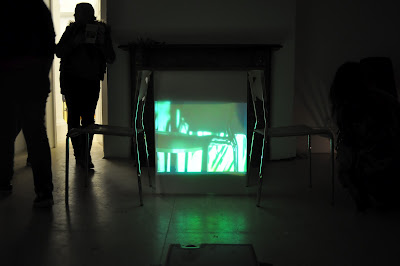http://www.youtube.com/watch?v=GXrRC3pfLnE
'Do I add to the images in movies? I don't think so; I don't have time: in front of the screen, I am not free to shut my eyes; otherwise, opening them again, I would not discover the same image; I am constrained to a continuous voracity; a host of other qualities, but not pensiveness; whence the interest, for me, of the photogram.
Yet the cinema has a power which at first glance the Photograph does not have: the screen (as Bazin has remarked) is not a frame but a hideout; the man or woman who emerges from it continues living: a "blind field" constantly doubles our partial vision. Now, confronting millions of photographs, including those which have a good studium, I sense no blind field:everything which happens within the frame dies absolutely once this frame is passed beyond. When we define the Photograph as a motionless image, this does not mean only that the figures it represents do not move; it means that they do not emerge, do not leave: they are anesthetized and fastened down, like butterflies.'
(Page 56-7) Camera Lucida, Roland Barthes
Initial thoughts on bringing two practices together to form a collaboration
Photography/Still Image (motionless)
Film/Moving Image (but in this case non-narrative)
But both concerned with:
Objects
The everyday
Things that usually go unnoticed
Key Words:
TEMPORALITY
EPHEMERAL (EPHEMERA) "there but not there"
TRACE
LAYERS
Exploring double projection. The narrative of layering of projection. Narrative of the process of layering.
Triptych: stretch materials over a frame. Explore opacity of materials projected on to. (Six projectors?)
Feel that we shouldn't use technology to splice images together. Not digital mediation of images: SPACIAL MEDIATION.
Exploring the liminal space between our practices.
City as palimpsest/ film as palimpsest. History of the development of still and moving image; implicit within film. Exploring narrative of still image and film.
Reacting to the space, and objects in the space (not bringing objects into the space: contrived?)
Laura Buckley: Cell Project Space (Visited 11/02/12)
Structure built to project onto. Image is multiplied and distorted. The frame.
Exhibition Views:
Exhibition Views:
Screenprint onto tracing paper (the material used to project onto. In the screenprinting process the image is again exposed to light and so there is still a narrative of a kind of-projection or re-materialisation of the image which becomes increasingly fragmented).
Truly becoming one image.









